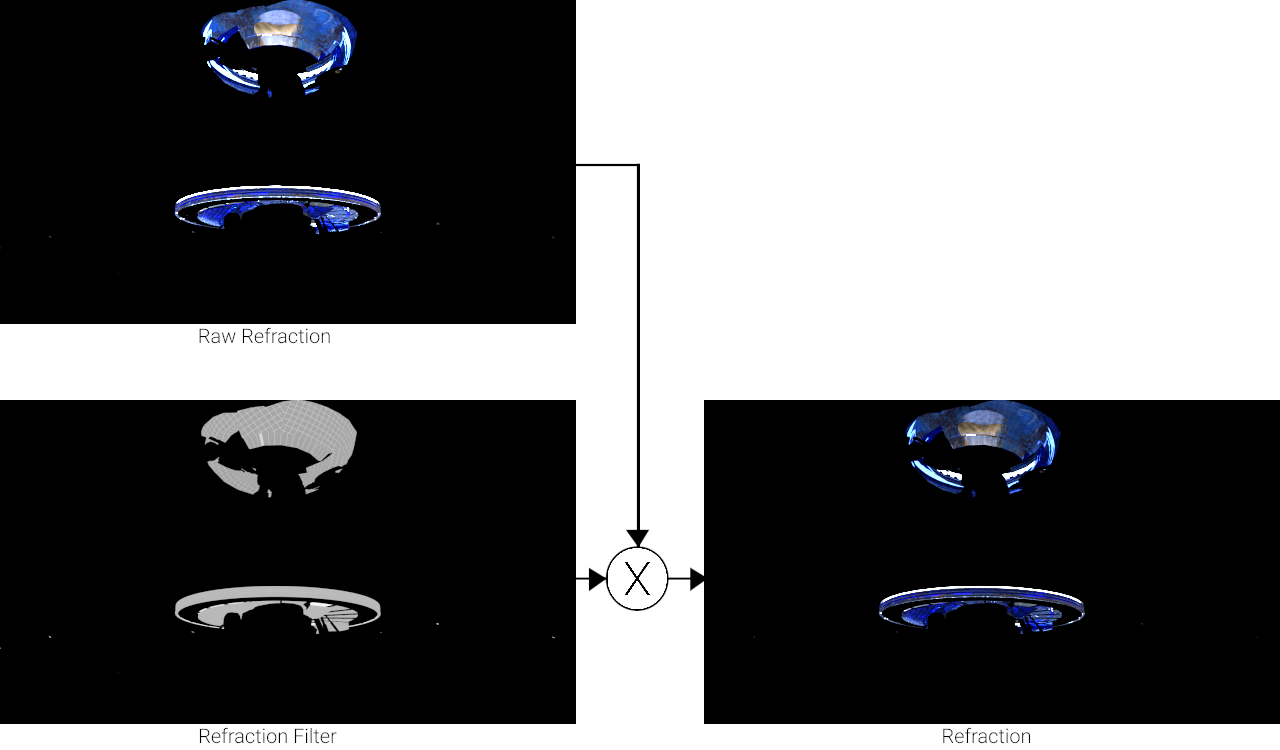This page gives some basic details about the Refraction Filter Render Element and how it is used in compositing.
|
To properly calculate the Refraction Filter Render Element, the Refraction Render Element must also be added to the list of render elements being calculated during the rendering process to properly determine all the refraction information in the scene. |
||Render Settings window|| > Render Elements tab > Refraction Filter
The parameters for this render element appear in the Attribute Editor under Extra V-Ray Attributes.
Enabled – When enabled, the render element appears in the V-Ray Virtual Frame Buffer.
Deep output – Specifies whether to include this render element in deep images.
Filename suffix – The text added to the end of the rendered file, when saved as a separate file (e.g. myrender.refractionFilter.vrimg).
Denoise – Enables the render element's denoising, provided the Denoiser render element is present.
The Refraction Filter Render Element is useful for changing the appearance of refractive elements after rendering, using a compositing or image editing application. Below are examples of possible uses.
|
|
|
The Refraction Filter Render Element is multiplied by the Raw Refraction to produce the same information seen in the Refraction pass, but having them separated out allows them to be manipulated individually before combining them together.
vrayRE_Raw_Refraction x vrayRE_Refraction_Filter = vrayRE_Refraction

|